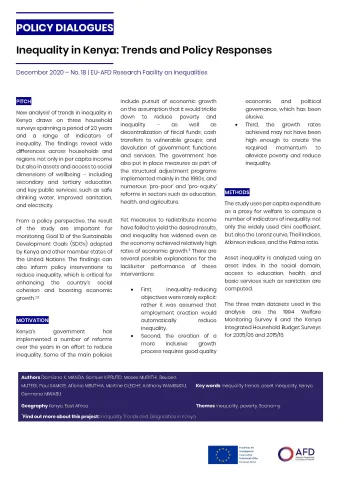Share the page
Inequality in Kenya: Trends and Policy Responses
Published on

New analysis of trends in inequality in Kenya draws on three household surveys spanning a period of 20 years and a range of indicators of inequality. The findings reveal wide differences across households and regions, not only in per capita income but also in assets and access to social dimensions of wellbeing – including secondary and tertiary education, and key public services, such as safe drinking water, improved sanitation, and electricity.
From a policy perspective, the result of the study are important for monitoring Goal 10 of the Sustainable Development Goals (SDGs) adopted by Kenya and other member states of the United Nations. The findings can also inform policy interventions to reduce inequality, which is critical for enhancing the country’s social cohesion and boosting economic growth.
Useful Information
-
Authors
-
Damiano K. MANDA, Samuel KIPRUTO, Moses MURIITHI, Reuben MUTEGI, Paul SAMOEI, Aflonia MBUTHIA, Martine OLECHE, Anthony WAMBUGU, Germano MWABU
-
Coordinators
-
Edition
-
18
-
Number of pages
-
2
-
ISSN
-
in progress
-
Collection
-
Policy Dialogues
